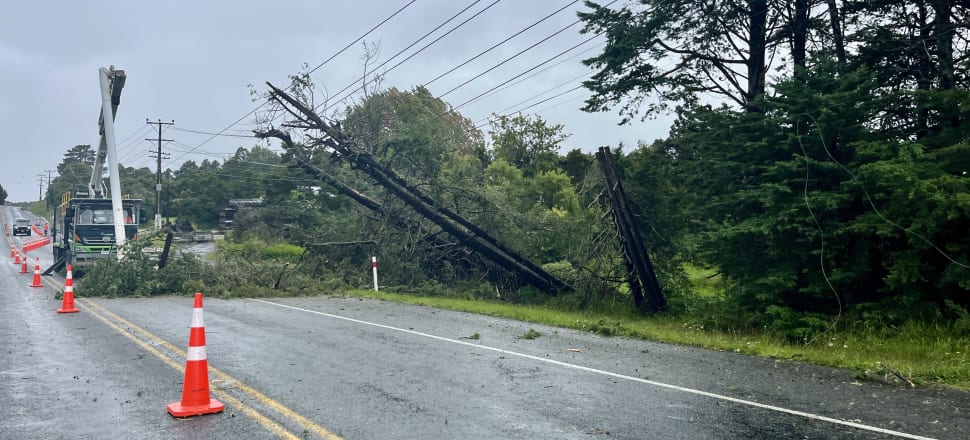
The electricity industry says preventable damage caused by trees will cost consumers for years to come.
Cyclone Gabrielle exposed weaknesses in much of New Zealand’s infrastructure, but arguably none more so than its electricity network.
Hundreds of thousands went without power at some point during the cyclone because of downed powerlines and a flooded substation in Hawkes Bay.
Blackouts also affect crucial telecommunications capabilities.
READ MORE: * Gabrielle a curveball for supply chain recovery * ‘ We are entering a period of consequences’ * Heavens open, rains come down and rates go up
The Electricity Network Association estimated a $100 million bill repairing damaged lines from the cyclone.
Repairing the damage will exceed the $76m budgeted for the entire year, almost all of which had already been spent due to it being close to the end of the financial year. It anticipates this cost being passed on to consumers for years to come.
The Association's chief executive Graeme Peters said around half of outages could have been avoided if lines companies could control vegetation effectively, but as current rules stand, they can’t.
“We would like to have the ability to control vegetation around our lines more effectively but we're limited in that regard by the tree regulations which were passed in a hurry in 2003.”
Peters said Electricity (Hazards from Trees) Regulations 2003 were rushed and not fit for purpose and hadn’t been reviewed in the 20 years since despite repeated calls to both National and Labour governments.
“I know that this is a controversial subject for some, but what is also controversial is when trees blow into power lines, and we have significant outages, and those outages affect people and businesses.” – Graeme Peters, Electricity Network Authority
A review process was supposed to have kicked off in 2017. Peters believed a discussion document had been “sitting in a government inbox for about a year”.
The current rules allow trees of any kind to grow as close as 50cm from power lines with no ability to distinguish between age, size and species – such as Eucalyptus, often called the widow maker because of its branch-dropping habits.
“For some species, the risk is low because they are hardier and don't tend to fall over, but some exotic trees are very prone to wind damage.”
The current rules also have a provision for a $10,000 penalty for people failing to adhere to tree-cutting notices, though nobody has ever been fined.
Peters would also like to see greater powers in this regard.
It’s not uncommon to see headlines or community groups complaining about botched or tasteless jobs removing vegetation from around lines.
He appreciated that trees had amenity value in suburbia, but this issue was just as much about rural areas where huge stretches of line sit.
“I know that this is a controversial subject for some, but what is also controversial is when trees blow into power lines, and we have significant outages, and those outages affect people and businesses.”
“We should have bit the bullet 20 years ago, 30 years ago, but now we have what we have and it's going to be more expensive, but the events that we see are not going to be any less frequent or any milder.” – Timothy Welch, University of Auckland
Peters said he didn’t know if having appropriate tree rules in place would have resulted in fewer blackouts in the past few days and was incredibly sympathetic to those affected.
University of Auckland urban planning senior lecturer Timothy Welch believes more should be done to run power lines underground where they are largely safe from tree damage (though flooding and earthquakes do pose a risk).
“To some degree the power companies are just kicking the can down the road of what they should be doing.”
He recognised it was an expensive process and not suited to rural areas, as Peters also pointed out, but it should be thought of as a balance sheet issue, ie whether the lines companies want to have costs now or continually down the road when they have to make repairs after weather events.
“The thing is, like everything we should be doing to prepare for climate change and severe weather, the longer we wait, the more expensive it gets.
“We should have bit the bullet 20 years ago, 30 years ago, but now we have what we have and it's going to be more expensive, but the events that we see are not going to be any less frequent or any milder.”







